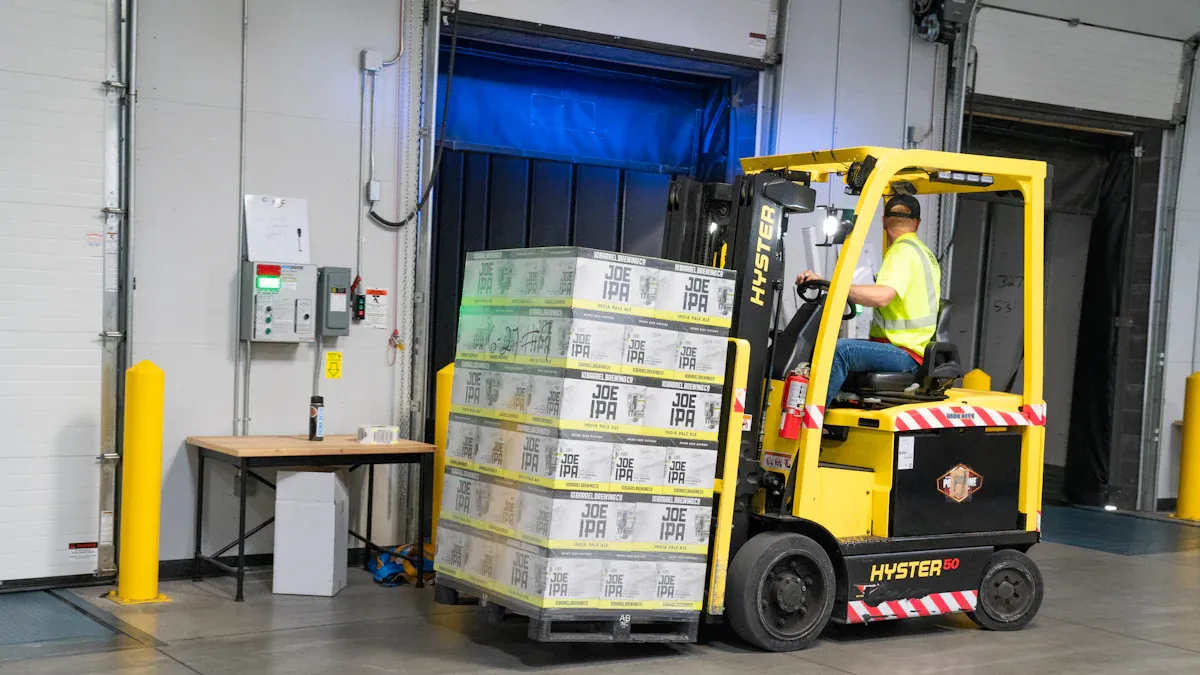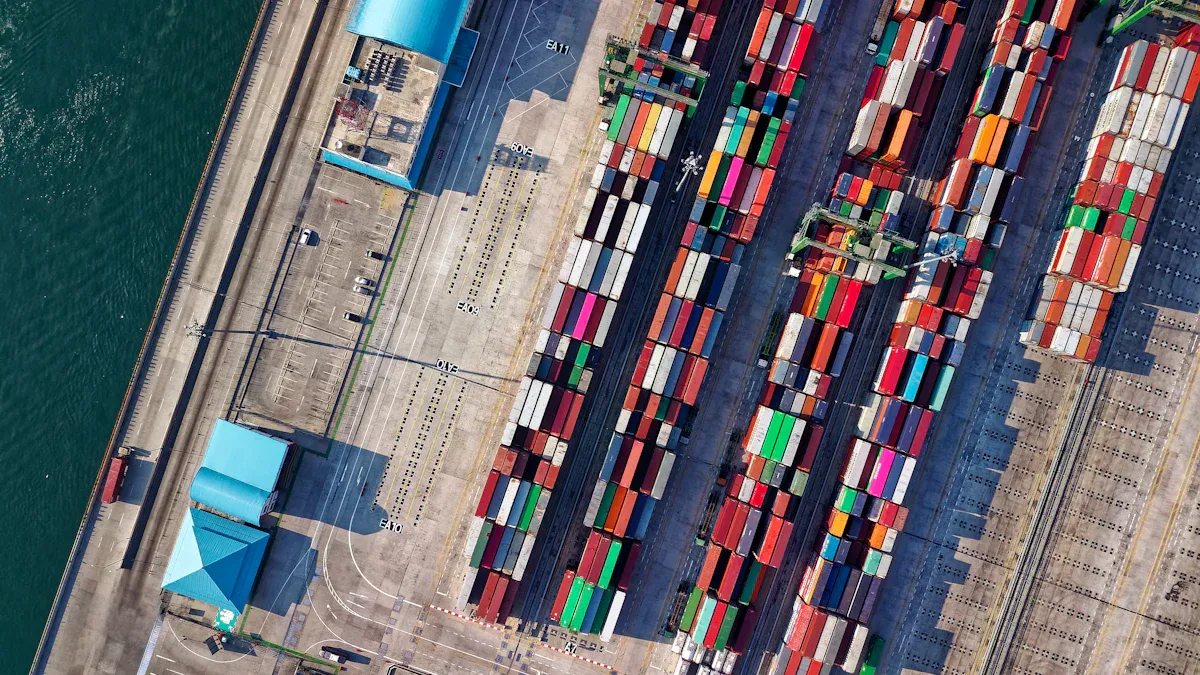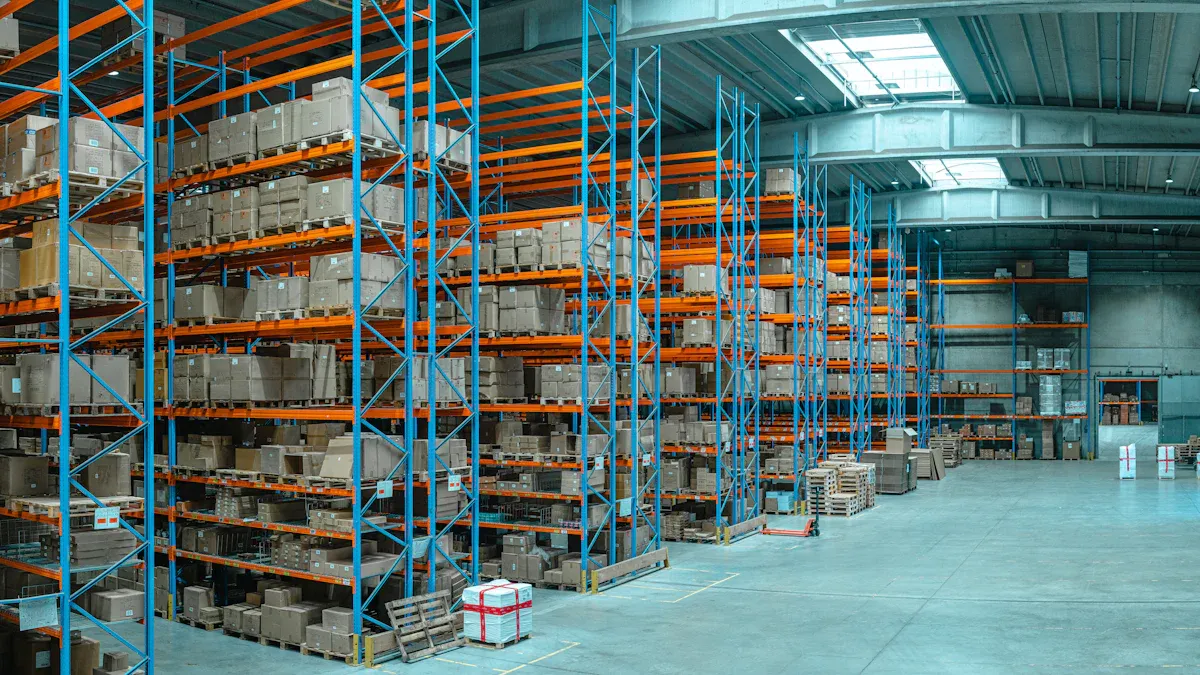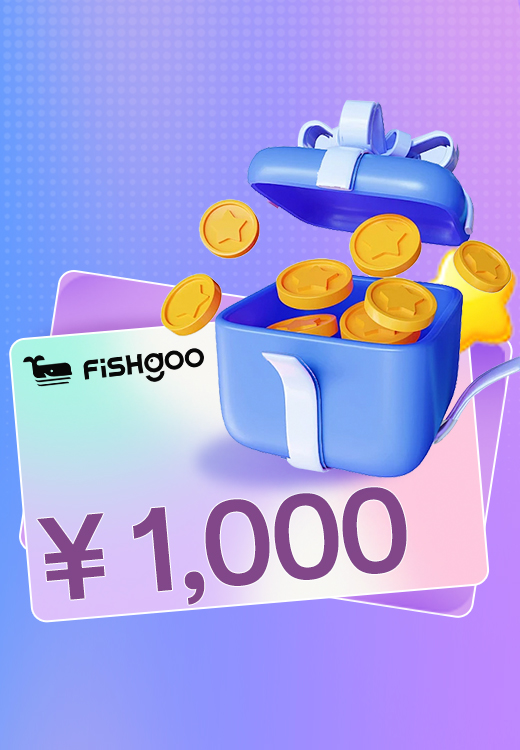Unlocking Seamless Supply Chain Strategies for Asian Distributors

Picture this: You buy things from China, and they come fast, safe, and easy. This is what a seamless supply chain promises. In Asian distribution, a seamless supply chain means every part—from getting products to sending them—works well together. You work faster, spend less, and make your customers happy. Many distributors still have problems with slow shipping and high prices. You might deal with these supply chain problems every day. New one-stop cross-border platforms, like Fishgoo, are changing how you reach seamless supply chain goals. Now, you can work on being faster and making customers trust you with each order.
Key Takeaways
A seamless supply chain links every part of your business. This makes things move faster and work better. Using technology like AI and smart tools helps you watch shipments. It also helps you handle stock well. Building strong relationships with suppliers helps you talk better and trust each other. This makes everything work better. Checking your supply chain often with KPIs helps you find problems early. You can then fix them fast. Using sustainability practices helps the environment. It also brings in customers who like responsible businesses.
Seamless Supply Chain Basics
What It Means
A seamless supply chain links every part of your business. It starts with getting materials and ends with sending products. Each part works together without problems or waiting. Asian distributors can track goods and manage suppliers easily. They can also handle logistics without trouble. Information moves smoothly between partners. Everyone knows what they need to do. This helps build a supply chain that lasts.
Here is a table that lists the main parts you need for a seamless and strong supply chain:
Component | Description |
|---|---|
Enhanced Supply Chain Mapping | Shows you the production steps and helps you plan changes. |
Supplier Audits and Inspections | Lets you visit suppliers to check if they meet your needs. |
Compliance and Certification | Makes sure your business can export and has the right certificates. |
Lets you compare shipping prices and times to pick the best way. | |
Full Supply Chain Map | Shows the whole path from materials to delivery, so you always know where things are. |
You use these tools to make a supply chain that helps your business grow.
Why It Matters
A strong supply chain saves money and cuts waste. It keeps customers happy. You always know where your products are. This helps you stop mistakes and delays. You can fix problems fast. Customers and partners trust you more.
A strong supply chain means you care about the future. You use resources well and follow rules to protect nature. You make choices that help your business last.
You get a good name when you focus on a strong supply chain. Customers pick you because you deliver on time and care about quality. You can work with new partners and enter new markets more easily. Today, having a strong supply chain is not just popular. It is needed for any distributor who wants to do well in Asia.
Asia’s Supply Chain Landscape

Regional Challenges
Managing a china supply chain in Asia is tough. Things can change fast and be hard to predict. You have to watch out for safety and security problems. Bad water and energy can slow your work. Sometimes, you cannot get enough raw materials. Distribution can stop without warning. Many companies do not check suppliers well, so mistakes happen.
Shipments can stop because of safety or security problems.
Bad water and energy make it hard to keep things moving.
Not enough raw materials means you need new suppliers.
Distribution problems can make your deliveries late.
Not checking suppliers well can make risks higher.
Health problems are also a worry. Sick workers can slow down your china supply chain. In some places, water is bad and costs more. You may need to clean dirty water, which costs extra. Energy can run out or get more expensive, so your costs go up.
Natural disasters are a big problem too. Earthquakes, tsunamis, and floods can hurt your supply chain. Volcanic eruptions, nuclear accidents, and protests can also cause delays. You always need to be ready for these risks in your china supply chain.
Opportunities
Even with these problems, you can still find ways to make your china supply chain better. Many companies now look at other Asian countries for help. Vietnam, Thailand, and Malaysia have skilled workers and good business conditions. The "Make in India" plan gives you another choice with strong factories.
You can use different Asian countries to help your china supply chain.
Using more than one country helps lower your risks.
You can keep making things in Asia and feel safer.
New technology can also help your china supply chain. AI and big data can find problems early. This lets you fix things before they get worse. These tools make your china supply chain work better and faster.
Tip: Always look for new ways to improve your china supply chain. This helps you stay ahead of others in the market.
Seamless Supply Chain Strategies
Technology Integration
You can make your work easier with technology. Asian distributors use smart manufacturing to automate jobs. These tools help you see where goods are and manage stock. They also help you guess what customers will want. Data analytics and ai help you find patterns and cut down waste. They help you make good choices.
AI and machine learning help with shipping and stock.
IoT devices show you updates right away. This helps you pick better routes and avoid problems.
Blockchain keeps your deals safe. It also helps you see where things are and makes everything clear.
Clean energy, like electric vehicles, helps you use less fuel and save money.
Platforms like Fishgoo make buying and shipping easy. You can paste a product link and pay in ways you know. You can watch your order from the warehouse to your door. Fishgoo puts buying, paying, and shipping all in one place. This saves you time and stops mistakes.
Tip: Use smart tools to watch your supply chain. You will find problems early and keep customers happy.
Supplier Collaboration
Working well with suppliers is very important. You need to share news and plan together. This helps everyone get ready for busy times. Planning early gives suppliers time to get set. Sharing your order plans helps them bring what you need.
Use apps like WeChat or Slack for quick messages.
Set goals to check how suppliers are doing and give advice.
Make special data forms for each supplier group to work faster.
Using good chat tools helps you work better with suppliers.
When you team up with suppliers, you build trust. You can see what is happening and fix problems fast. You can change plans when the market changes. This teamwork helps you buy and make things better.
Note: Working with suppliers means sharing info, setting goals, and solving problems together.
Regulatory Compliance
You must follow rules when you trade with other countries. Each Asian country has its own rules. Following these rules keeps your business safe. It also helps partners and customers trust you. Here are some ways to follow the rules:
Description | |
|---|---|
General Trade | Regular customs steps for normal trade. |
Market Procurement Trade | Special rules for buying from markets. |
Cross-Border E-Commerce Direct Mail Export | Sending goods by mail for exports. |
Cross-Border E-Commerce Bonded Export | Sending goods from special warehouses. |
Cross-Border E-Commerce B2B Direct Export | Sending goods straight to other businesses. |
Cross-Border E-Commerce Export to Overseas Warehouses | Sending goods to warehouses in other countries. |
You also need to follow data safety laws, like the PRC Data Security Law. Only collect the data you need. Do not use it for other things. China will have new export rules in 2025. You will need to plan even more.
Tech tools help you follow the rules. Alerts warn you if something is wrong. Smart analytics help you see risks before they happen. These tools help you pick good suppliers. Fishgoo gives you clear info and helps you follow the rules.
Remember: Following rules is not just a task. It helps you build a strong and trusted supply chain.
Overcoming Obstacles
Logistics Solutions
Supply chains can be hard to manage every day. Logistics can slow you down or help you grow. Package consolidation saves both money and time. When you combine shipments, you pay less for fuel and port fees. Shipping is also faster when you send things together. Flexible shipping lets you pick the best route for your goods. Multi-country consolidation means you can ship from many Asian countries at once. This gives you better prices and fewer paperwork fees. Fishgoo helps with logistics by offering warehousing and package consolidation. You can store goods, combine orders, and pick the shipping method you want. These solutions help you use less waste and fewer resources.
Combine shipments to save money.
Pick shipping that fits your needs.
Store and combine goods in local warehouses.
Choose shipping lines that balance speed and price.
Quality Control
Quality control keeps customers happy and protects your brand. You need experts to check every product. Visual checks look for defects. Sampling inspections test big groups of products. Functional testing makes sure electronics and appliances work. Safety checks make sure products follow rules. Special inspections look for risks in each product type. Fishgoo offers quality inspection and weighing in their warehouses. You get good products and strong after-sales support. This support makes customers happy and brings them back. You also show you care about fair labor and the environment.
Inspection Method | Description |
|---|---|
Visual Inspection | Checks for defects like scratches and poor workmanship. |
AQL-Based Sampling Inspection | Uses statistical sampling for large batches. |
Functional Testing | Ensures products work as intended. |
Safety and Compliance Checks | Confirms products meet regulations. |
Specialized Inspections | Tailored for unique risks and standards. |
Factor | Influence on Customer Satisfaction | Influence on Repurchase Intentions |
|---|---|---|
Delivery Service Quality | Significant | Positive |
Return Logistics Services | Significant | Positive |
Cross-Border Shopping Experience | Significant | Positive |
Price Fairness | Not Supported | Positive |
Cultural Barriers
Cultural barriers can slow your supply chain. You may see different ways people talk, work, and make choices. High-context communication can cause confusion. Respect for authority can slow decisions. Group goals and long hours affect teamwork. You can fix these problems with cultural training, AI translation, and local rules. Diverse leaders help close gaps. Building relationships and learning local languages help you make deals. Respecting hierarchy and knowing gestures make logistics smoother. You also support fair labor by respecting local customs and teamwork.
Cultural Barrier | Description |
|---|---|
Communication Styles | Implicit messages and indirect communication can cause misunderstandings. |
Hierarchical Structures | Respect for authority slows open dialogue and decision-making. |
Work Ethic and Attitudes | Group goals and long hours shape teamwork and responsibilities. |
Strategy | Description | Example |
|---|---|---|
Develop Cultural Training Programs | Training on cultural awareness for international business. | Boeing aligns supply chain teams globally. |
Use AI & Real-Time Translation Tools | Eliminates language barriers in logistics and negotiations. | DHL uses AI translation in 200 countries. |
Localized Supply Chain Governance Models | Adapts strategies per region. | Unilever customizes contracts for each market. |
Cross-Cultural Leadership Teams | Diverse teams bridge operational gaps. | Toyota’s global team aligns purchasing. |
Establish Personal Relationships | Trust-building is key in Asian business culture. | Informal meetings and gift exchanges before negotiations. |
Tip: Solving logistics, quality, and cultural problems makes your supply chain stronger. You work better, help the environment, and support fair labor.
Performance and Growth

Measuring Success
You need simple ways to check your supply chain. KPIs help you see how things are going. They show problems early and help you fix them. KPIs also tell you what is working well. Here is a table with important KPIs for Asian distributors:
KPI | Description | Importance |
|---|---|---|
Lead Time | Days from order to production completion | Helps with planning and customer satisfaction |
On-Time Delivery | How often products arrive as promised | Shows supplier reliability |
Non-Conformity Rate | Products that do not meet standards | Protects quality and reduces risk |
Defect Rate | Defective products out of total made | Reflects quality control |
Return Rate | Products sent back due to issues | Shows customer satisfaction and product quality |
You should also see how your supply chain compares to others. Benchmarks help you know if you are doing well. Some benchmarks are:
In-degree centrality shows if your sector needs other sectors.
Out-degree centrality tells if your sector helps global networks.
In-closeness centrality checks if your sector is close to the network center.
Out-closeness centrality shows how much your sector reaches out.
Betweenness centrality tells if you connect different supply chain parts.
Benchmarks help you learn your place and find ways to grow.
Continuous Improvement
You can always make your supply chain better. Kaizen is a way to improve by making small changes often. Everyone in your company helps find and fix problems. Kaizen cuts waste and makes work easier. You use it in every part of your supply chain.
You can learn from other companies in Asia. For example:
Hitachi used “milk runs” to get parts faster.
Many businesses use technology to manage inventory and work quicker.
Tip: Small changes every day make your supply chain stronger and more reliable over time.
You can make your supply chain work better in many ways. Try getting products from different places. Build good relationships with your suppliers. Use smart digital tools to help you. Technology and platforms like Fishgoo let you watch your shipments. They help you spend less money and make better choices. First, look at how you do things now. Then, try these ideas:
Think of suppliers as partners for a long time.
Use one digital system to track everything.
Put shipments together to save time and money.
Resource Area | Benefit |
|---|---|
Supply Chain Strategy | Makes your work smoother |
Warehousing | Delivers faster and safer |
Transportation | Costs less and covers more |
Try using all-in-one solutions to keep up in Asia’s fast-moving market.
FAQ
How can you improve supply chain visibility as an Asian distributor?
You can use digital tools to watch your shipments and stock. Real-time updates show you each step. This way, you can fix problems fast and build trust with partners.
What are the main logistical complexities in cross-border trade?
You deal with customs rules, shipping delays, and payment differences. Combining packages and picking flexible shipping helps you handle these problems and save money.
Why should you focus on sustainability practices in your supply chain?
Sustainability helps you use less and waste less. Customers like companies that protect the environment. You get ahead by showing you care about the planet.
What role does technology play in gaining competitive advantages?
Technology lets you automate jobs and study data. You can make smart choices and react fast to changes. This helps you grow and stay ahead in global manufacturing.
How do you build a strategic approach for long-term supply chain success?
You set clear goals and check your progress. You work with good suppliers and use smart tools. This helps you change when needed and stay strong in global manufacturing.
See Also
Enhancing Global E-Commerce Logistics For Cross-Border Efficiency
FISHGOO Will Simplify International Shopping For Chinese Goods By 2025
A Comprehensive Weidian Guide For International Buyers: Pros And Cons
Navigating Online Shopping From China: Key Platforms And Tips For 2025
The Importance Of International Warehousing For Global Business Growth


